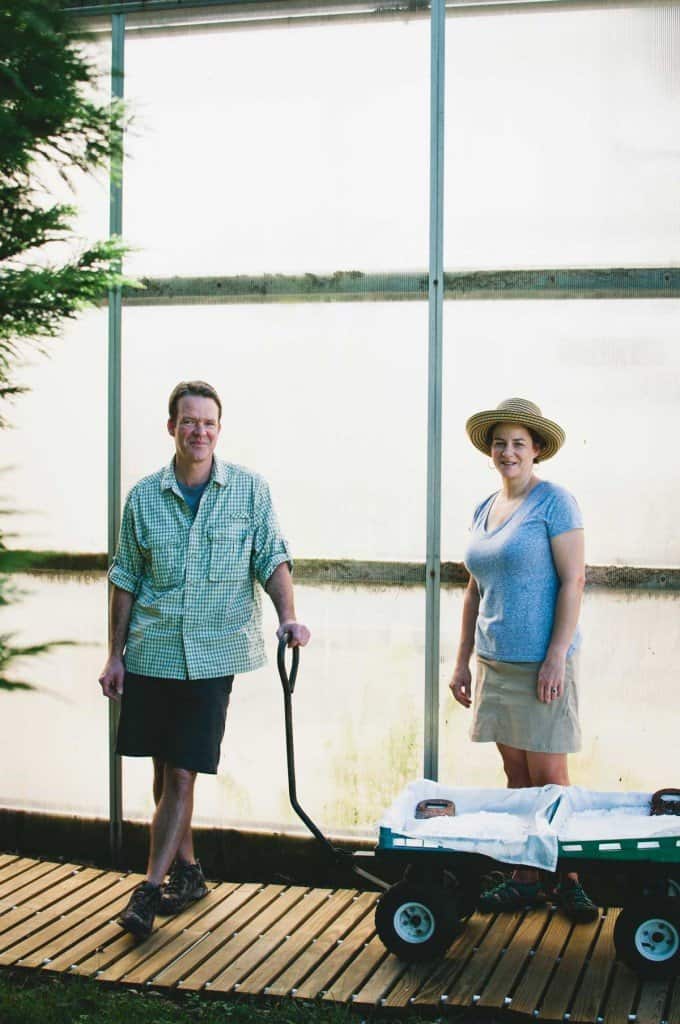1
We draw up brine from the Iapetus Ocean, deep below the Appalachian Mountains, to the surface by means of a well. The brine is held in a settling tank for about a week to let it clarify.
1
2
The brine is then moved from the tank into evaporation beds in our sun-houses, where it is solar evaporated to concentrate the salinity.
2
3
Once the brine is evaporated by just the right amount, it is moved to a crystallization bed. Then crystals begin to form. (The fun part!)
3
4
Once the salt crystals have formed, they are hand-raked to separate them from the bittern ("nigari", as it is known in Japan). This is a residual mineral-rich liquid that can be used to make tofu or can be taken as a natural mineral supplement.
4
5
Our hand-made wooden rake is the perfect tool to gently harvest the salt and optimize the size and flake of the crystals. All of our tools are hand-crafted for us from Birch wood by our good friends at Allegheny Treenware, in Thornton, WV.
5
6
At the end of the harvesting the salt is scooped onto cotton cloths for drying.
6
7
Salt is harvested daily in the summer.
7
8
Finally, we carry the salt in small wagons back to our farm office, for it’s last breath of fresh air before we package, hand-label, batch number, and seal each glass jar of salt with the same care with which it was made.
8
9
This all-natural, sustainably focused process leaves behind a clean, nutrient-filled salt. Because the power of the sun and the mountain air do most of the work, there are no additives, nor anti-caking agents present.
9
OUR PROCESS
Our salt making is a unique and innovative process, completed by hand without the use of big machinery and additives. We work to enhance the natural properties of the salt, using the power of the earth and hand-made tools to produce an extraordinarily pure product.
In the summer, a batch takes an average of four to six weeks from start to finish. In the winter, it can take up to three months, depending on the weather.

